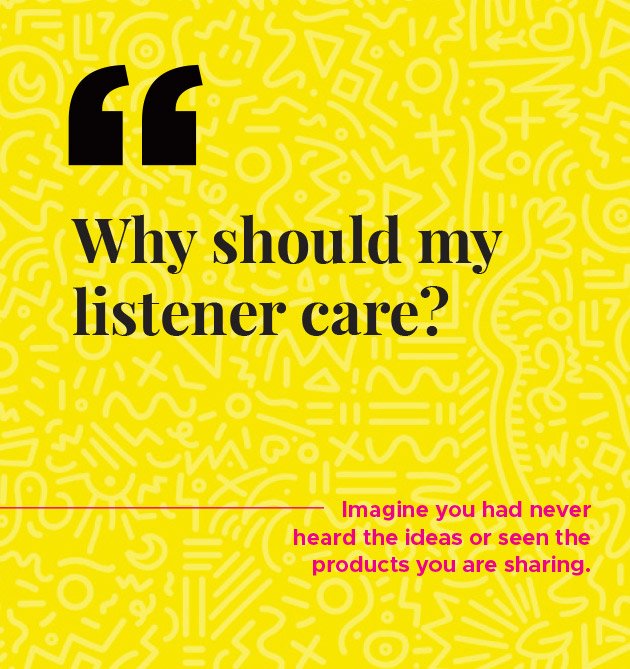Blog
How to understand your audience and close huge deals
Quick question: Why is it that most presentations – from sales pitches to webinars – are so boring?
Most presentation givers make their pitch about themselves. So how do you avoid this pitfall?
Understand Your Audience
To begin, ask yourself the simple question, “Why should my listener care?” Imagine you had never heard the ideas or seen the products you are sharing. What would convince you?
Next, think about the topic itself and how it relates to the audience. Shift your story or message to meet their needs. For instance, if you’re pitching a sale to a gatekeeper, it’s going to look pretty different than if you are pitching to a C-Suite executive or decision maker. The details that might win over the gatekeeper could be seen as a waste of time by a CEO.
Always be mindful of who your audience is.
The same is true of sharing ideas. If you’re speaking at a marketing conference, you wouldn’t speak about work practices that help the operations department. Even if the ideas you’re sharing are applicable to different audiences, your examples – the anecdotes and supporting visuals – should be tailored to your audience.
Find Your One Thing
While it can be tempting to create a laundry list of reasons your audience should share your viewpoint, a far more persuasive tactic is to find one beneficial thing for them to take away. This idea will be the backbone of your story arc and should motivate your audience to act.
For instance, let’s say you’re selling a new software that can save workers hours by automating data input. Your one idea, or take away, should be that using this product gives workers hours back in their day. Hours they can spend with their families or working on other things important to the company.
If you unload a list of cool features and statistics to prove how efficient and versatile the software is before making a connection to their needs and interests, your audience will begin to feel overwhelmed and lose interest. Instead of having one big idea to take away, they’ll have been presented with so many ideas they’re likely to shut down and remember none. That’s the last thing you want.

It’s Time to Get Emotional
You’ll notice in the example above, we used more time with family as one of the benefits of the software. This is strategic for a couple of reasons. It’s easily relatable because everyone has a family of some sort, and in most cases, we wish we had more time with them. More importantly though, this benefit is an emotional appeal or an appeal to pathos.
Aristotle, the father of rhetoric and public speaking, defined pathos as “passion.” Pathos is one of the most effective persuasive tools because it appeals to the emotions of the audience and elicits feelings that already reside in them.
No matter what you are presenting, whether it’s a product, a service, or an idea, there is an emotional benefit. Maybe your offering will give users more time back in the day, like in the example above. Maybe it will make their job easier and lower their stress level. Whatever it is, find that emotional benefit and make it part of the one idea for your audience to take away.
What makes them hurt?
The easiest way to focus on the emotional benefits is to identify your audience’s pain. Does your audience feel overwhelmed by their work? Are they constantly fighting to meet the bottom line? Do they feel restricted by their current systems and processes?
Pain points serve as powerful triggers in presentations because everyone experiences emotional pain, and everyone thinks theirs is unique. This makes appealing to an audience’s pain points highly strategic. Not only are you able to relate to many people at once, you’re able to do so on a deeply personal level.
Discover more ways to engage your audience and close big deals with our guide to speaking and presentations.


